 I am a bit late to the party with this project from "NYC-based, Iranian-Canadian brothers" Mohammed and Mehdi Mehrabani-Yeganeh, as they have been steadily releasing oft-killer music since 2017. This is their first album for Important, however, and it makes for a perplexingly unrepresentative introduction to their work, taking their more industrial tendencies in an unconventionally jazz-inspired direction with mixed results. That said, the brothers make a conscious point of attempting to "present new ideas" with each fresh release, so a truly representative album may never exist. Instead, each album is a snapshot of their thoughts and inspirations at one particular stage of their evolution. Similarly, the brothers are unswervingly devoted to making their music personal by rooting it in their own stories. Conceptually, that makes To Live A La West the Saint Abdullah album inspired by the time the brothers were allowed to attend a dance after their sixth grade graduation. The album is quite a bit harder to define stylistically, however. While the brothers cite Jon Hassell's Fourth World aesthetic as one major source of inspiration, I cannot think of any artists who explore similarly eclectic territory to this album’s curious mixture of free jazz and industrial-tinged experimentation mingled with shades of electronic pop and Iranian music. To my ears, this album could not be much further from the sights and sounds of a middle school dance (even filtered through psychedelic sensibility), but the best moments achieve a kind of strange beauty akin to Carter Tutti Void teaming with up some Egyptian jazz guys to record a very strange and unconventional film soundtrack. The other moments are considerably harder to explain, as they resemble industrial jazz vamps made by an AI whose primary influence is '80s arcade game sounds.
I am a bit late to the party with this project from "NYC-based, Iranian-Canadian brothers" Mohammed and Mehdi Mehrabani-Yeganeh, as they have been steadily releasing oft-killer music since 2017. This is their first album for Important, however, and it makes for a perplexingly unrepresentative introduction to their work, taking their more industrial tendencies in an unconventionally jazz-inspired direction with mixed results. That said, the brothers make a conscious point of attempting to "present new ideas" with each fresh release, so a truly representative album may never exist. Instead, each album is a snapshot of their thoughts and inspirations at one particular stage of their evolution. Similarly, the brothers are unswervingly devoted to making their music personal by rooting it in their own stories. Conceptually, that makes To Live A La West the Saint Abdullah album inspired by the time the brothers were allowed to attend a dance after their sixth grade graduation. The album is quite a bit harder to define stylistically, however. While the brothers cite Jon Hassell's Fourth World aesthetic as one major source of inspiration, I cannot think of any artists who explore similarly eclectic territory to this album’s curious mixture of free jazz and industrial-tinged experimentation mingled with shades of electronic pop and Iranian music. To my ears, this album could not be much further from the sights and sounds of a middle school dance (even filtered through psychedelic sensibility), but the best moments achieve a kind of strange beauty akin to Carter Tutti Void teaming with up some Egyptian jazz guys to record a very strange and unconventional film soundtrack. The other moments are considerably harder to explain, as they resemble industrial jazz vamps made by an AI whose primary influence is '80s arcade game sounds.
Important Records
This is one of those albums that starts out extremely strong, then gradually unravels and yields diminishing returns as it unfolds. If To Live A La West began and ended with "A Lot Of Kings," however, it would be damn near perfect. The duo are joined by trumpet player Aquiles Navarro and someone named Kol for a wonderfully simmering and smoky reverie of industrial-damaged and static-strafed jazz noir. The first hints that something has begun to go awry appear as early as the second piece, however, as it sounds like someone is throttling a modular synthesizer over an erratic, subdued, and ramshackle drum machine beat. It still ends up being a strong piece, as it is achieves a kind of jabbering, go-for-broke catharsis of squiggling electronic bloops, but I definitely felt that lack of a solid melodic component. The brothers next hit the mark again with the stomping, mechanized juggernaut of "Like A Great Starving Beast," as guest John Butcher enlivens the proceedings with a fiery sax solo. From that point onward, however, the brothers are on their own and they definitely chose a mystifying sound palette. Historically, Saint Abdullah are at their best when they aim for something akin to an Iranian Esplendor Geométrico with a strong taste for dub and sample collage, but they largely repress those tendencies on To Live A La West. In more concrete terms, that means that this album has plenty of cool grooves and foundational motifs, but they are almost always pushed to the background to focus on trilling sprays of blooping and bleeping melodies that elude any familiar scales or patterns. While the mechanized dance menace of "Furthermost" is a notable exception, the rest of the album lies somewhere between "chromatic free jazz shredding on a keytar," "someone loudly playing theremin over a '90s Aphex Twin album," "a Herbie Hancock album jarringly interrupting an S&M show," and "a modular synth player trying to mimic bird songs." Strange choices one and all and rendered even stranger by the existence of companion cassette of the same name on Cassauna. I am not sure why the brothers chose to release two similarly uneven albums in the same vein rather than a single solid one or why they did not enlist more collaborators for their ambitious jazz foray, but I do not feel they put their best foot forward here. In any case, Saint Abdullah is a great project and "A Lot of Kings" is a great song, but this is probably not the best place to start for the curious.
Samples can be found here.
 Over the course of his career, Jim Thirlwell has hugely expanded his repertoire with his Manorexia and Steroid Maximus projects as well as soundtrack work; a far cry and a lot more rewarding than my first exposure to him in my teens as a remixer of the likes of Nine Inch Nails. However, no matter what sideline work he does, when he comes back to Foetus it is a guarantee that the music will be brilliant. His role as a composer has fed progressively more into Foetus (fitting considering the seeds of Manorexia were sown and germinated in earlier Foetus albums) and Hide has a much wider scope than previously encountered.
Over the course of his career, Jim Thirlwell has hugely expanded his repertoire with his Manorexia and Steroid Maximus projects as well as soundtrack work; a far cry and a lot more rewarding than my first exposure to him in my teens as a remixer of the likes of Nine Inch Nails. However, no matter what sideline work he does, when he comes back to Foetus it is a guarantee that the music will be brilliant. His role as a composer has fed progressively more into Foetus (fitting considering the seeds of Manorexia were sown and germinated in earlier Foetus albums) and Hide has a much wider scope than previously encountered.


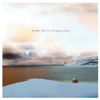 Dying is an art, and like any other one can do it with grace or go down kicking, screaming, all the while leaving a big mess behind that future generations have to clean up. This album is supple and sexy as death itself. There is no fear in these pieces. They convey the final breaths of a human as being elegnant and peaceful. This music displaces the anxiety many people feel about death. Doing so is a service to the world.
Dying is an art, and like any other one can do it with grace or go down kicking, screaming, all the while leaving a big mess behind that future generations have to clean up. This album is supple and sexy as death itself. There is no fear in these pieces. They convey the final breaths of a human as being elegnant and peaceful. This music displaces the anxiety many people feel about death. Doing so is a service to the world.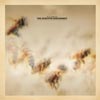 Although specifically composed to soundtrack a documentary about Colony Collapse Disorder called "The Vanishing of the Bees," The Effective Disconnect is not a dramatic departure from the sort of thing Brian McBride has always done extremely well: subtle and serene music with an undercurrent of sadness. As such, it basically feels more like a scaled-back follow-up to 2005's excellent When Detail Lost Its Freedom than an unrelated side-project. It's probably much too subtle to accomplish much in the way of garnering of new fans, but it is certainly a pleasant diversion for those of us converts waiting around for something more substantial to surface from the Stars of the Lid camp (like that damn
Although specifically composed to soundtrack a documentary about Colony Collapse Disorder called "The Vanishing of the Bees," The Effective Disconnect is not a dramatic departure from the sort of thing Brian McBride has always done extremely well: subtle and serene music with an undercurrent of sadness. As such, it basically feels more like a scaled-back follow-up to 2005's excellent When Detail Lost Its Freedom than an unrelated side-project. It's probably much too subtle to accomplish much in the way of garnering of new fans, but it is certainly a pleasant diversion for those of us converts waiting around for something more substantial to surface from the Stars of the Lid camp (like that damn  There are very real reasons why Cyclobe albums are so infrequent, as Ossian Brown and Stephen Thrower seem to deliberately eschew or expertly conceal most of the tools that similar artists rely upon (improvisation, chance/randomness, repetition, etc.) in favor of a constantly shifting and deliberate abstract narrative. There is a purposefulness and articulation to Cyclobe’s brand of psychotropic mindfuckery that is very much their own. Their best work (such as this album) feels like a twisted, meticulously composed infernal symphony or an ambitiously nightmarish film soundtrack for a film that no one could possibly make. Wounded Galaxies evokes something far too extreme and abstract to capture with words and images: a deep, timeless, all-consuming cosmic terror.
There are very real reasons why Cyclobe albums are so infrequent, as Ossian Brown and Stephen Thrower seem to deliberately eschew or expertly conceal most of the tools that similar artists rely upon (improvisation, chance/randomness, repetition, etc.) in favor of a constantly shifting and deliberate abstract narrative. There is a purposefulness and articulation to Cyclobe’s brand of psychotropic mindfuckery that is very much their own. Their best work (such as this album) feels like a twisted, meticulously composed infernal symphony or an ambitiously nightmarish film soundtrack for a film that no one could possibly make. Wounded Galaxies evokes something far too extreme and abstract to capture with words and images: a deep, timeless, all-consuming cosmic terror.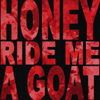 This trio's approach is similar at times to the musical cubism of the Magic Band but at others they go into overdrive to create a maelstrom of sound without ever completely abandoning melody and rhythm. The group's name evokes the devil, Freemasonry, and Doctor John R. Brinkley's testicular transplants.
This trio's approach is similar at times to the musical cubism of the Magic Band but at others they go into overdrive to create a maelstrom of sound without ever completely abandoning melody and rhythm. The group's name evokes the devil, Freemasonry, and Doctor John R. Brinkley's testicular transplants. Over the course of ten days twelve railway stations were visited and at each a thirty second sound recording and photograph were taken. During the train journeys, compositions were sketched onto scores and later recorded at one rehearsal evening with The City of Exeter Railway Brass Band. The twelve short tracks reflect those brief encounters, hint at the unrealized possibilities and fleeting nature of human life, and seek majesty in insignificant events. Less than eight minutes long and organized into two sections, a reissue of Twelve Stations is overdue.
Over the course of ten days twelve railway stations were visited and at each a thirty second sound recording and photograph were taken. During the train journeys, compositions were sketched onto scores and later recorded at one rehearsal evening with The City of Exeter Railway Brass Band. The twelve short tracks reflect those brief encounters, hint at the unrealized possibilities and fleeting nature of human life, and seek majesty in insignificant events. Less than eight minutes long and organized into two sections, a reissue of Twelve Stations is overdue.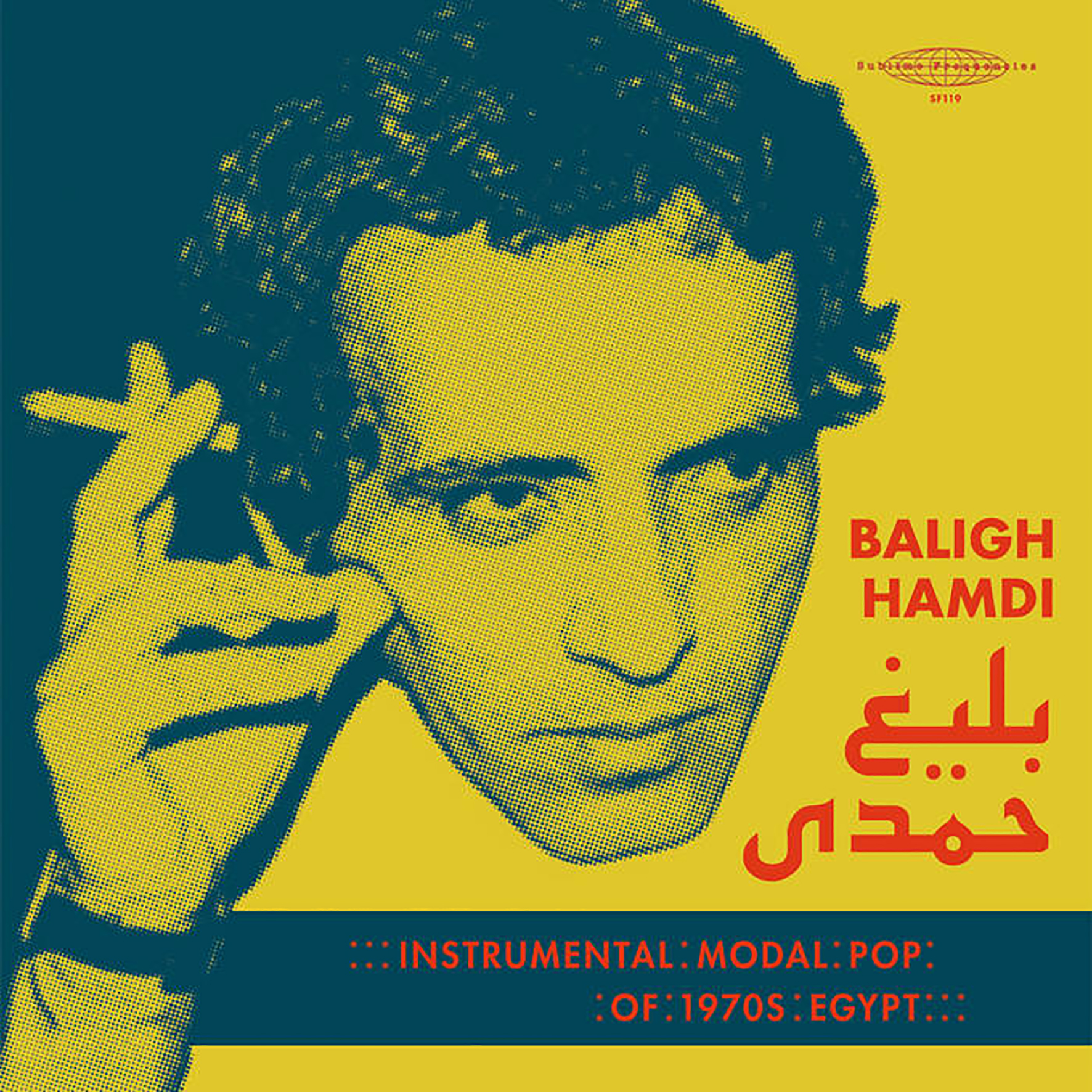 This latest collection continues Sublime Frequencies' impressive hot streak of releases this year, as Hisham Mayet has curated a selection of elusive instrumental pieces from "a towering figure in Arabic cultural history." Unsurprisingly, I have not knowingly encountered Hamdi's work before, as SF is always way ahead of the curve in digging up revelatory artists unfamiliar to most western ears, but Mayet and the songs he selected make a convincing case that Hamdi was indeed behind "some of the hippest music coming out of the Middle East from the late 1960s and throughout the 1970s." It was rare for Hamdi's work to surface under his own name, however, as most of his success and influence came from composing for a host of famous Arabic singers or scoring films, plays, and television. This collection, however, focuses on a very specific era of Hamdi's career in which Mayet believes the composer and his Diamond Orchestra perfected a modernized "international music" that elegantly combined "Eastern tinged jazz, theremin draped orchestral noir, and mid-east and eastern psychedelic exotica." Naturally, most of the original albums are exasperatingly elusive and expensive, but the rarity of these songs is secondary to their quality. This scratches roughly the same itch as other classic SF "pop" compilations like Bollywood Steel Guitar and Shadow Music of Thailand.
This latest collection continues Sublime Frequencies' impressive hot streak of releases this year, as Hisham Mayet has curated a selection of elusive instrumental pieces from "a towering figure in Arabic cultural history." Unsurprisingly, I have not knowingly encountered Hamdi's work before, as SF is always way ahead of the curve in digging up revelatory artists unfamiliar to most western ears, but Mayet and the songs he selected make a convincing case that Hamdi was indeed behind "some of the hippest music coming out of the Middle East from the late 1960s and throughout the 1970s." It was rare for Hamdi's work to surface under his own name, however, as most of his success and influence came from composing for a host of famous Arabic singers or scoring films, plays, and television. This collection, however, focuses on a very specific era of Hamdi's career in which Mayet believes the composer and his Diamond Orchestra perfected a modernized "international music" that elegantly combined "Eastern tinged jazz, theremin draped orchestral noir, and mid-east and eastern psychedelic exotica." Naturally, most of the original albums are exasperatingly elusive and expensive, but the rarity of these songs is secondary to their quality. This scratches roughly the same itch as other classic SF "pop" compilations like Bollywood Steel Guitar and Shadow Music of Thailand. I am a bit late to the party with this project from "NYC-based, Iranian-Canadian brothers" Mohammed and Mehdi Mehrabani-Yeganeh, as they have been steadily releasing oft-killer music since 2017. This is their first album for Important, however, and it makes for a perplexingly unrepresentative introduction to their work, taking their more industrial tendencies in an unconventionally jazz-inspired direction with mixed results. That said, the brothers make a conscious point of attempting to "present new ideas" with each fresh release, so a truly representative album may never exist. Instead, each album is a snapshot of their thoughts and inspirations at one particular stage of their evolution. Similarly, the brothers are unswervingly devoted to making their music personal by rooting it in their own stories. Conceptually, that makes To Live A La West the Saint Abdullah album inspired by the time the brothers were allowed to attend a dance after their sixth grade graduation. The album is quite a bit harder to define stylistically, however. While the brothers cite Jon Hassell's Fourth World aesthetic as one major source of inspiration, I cannot think of any artists who explore similarly eclectic territory to this album’s curious mixture of free jazz and industrial-tinged experimentation mingled with shades of electronic pop and Iranian music. To my ears, this album could not be much further from the sights and sounds of a middle school dance (even filtered through psychedelic sensibility), but the best moments achieve a kind of strange beauty akin to Carter Tutti Void teaming with up some Egyptian jazz guys to record a very strange and unconventional film soundtrack. The other moments are considerably harder to explain, as they resemble industrial jazz vamps made by an AI whose primary influence is '80s arcade game sounds.
I am a bit late to the party with this project from "NYC-based, Iranian-Canadian brothers" Mohammed and Mehdi Mehrabani-Yeganeh, as they have been steadily releasing oft-killer music since 2017. This is their first album for Important, however, and it makes for a perplexingly unrepresentative introduction to their work, taking their more industrial tendencies in an unconventionally jazz-inspired direction with mixed results. That said, the brothers make a conscious point of attempting to "present new ideas" with each fresh release, so a truly representative album may never exist. Instead, each album is a snapshot of their thoughts and inspirations at one particular stage of their evolution. Similarly, the brothers are unswervingly devoted to making their music personal by rooting it in their own stories. Conceptually, that makes To Live A La West the Saint Abdullah album inspired by the time the brothers were allowed to attend a dance after their sixth grade graduation. The album is quite a bit harder to define stylistically, however. While the brothers cite Jon Hassell's Fourth World aesthetic as one major source of inspiration, I cannot think of any artists who explore similarly eclectic territory to this album’s curious mixture of free jazz and industrial-tinged experimentation mingled with shades of electronic pop and Iranian music. To my ears, this album could not be much further from the sights and sounds of a middle school dance (even filtered through psychedelic sensibility), but the best moments achieve a kind of strange beauty akin to Carter Tutti Void teaming with up some Egyptian jazz guys to record a very strange and unconventional film soundtrack. The other moments are considerably harder to explain, as they resemble industrial jazz vamps made by an AI whose primary influence is '80s arcade game sounds.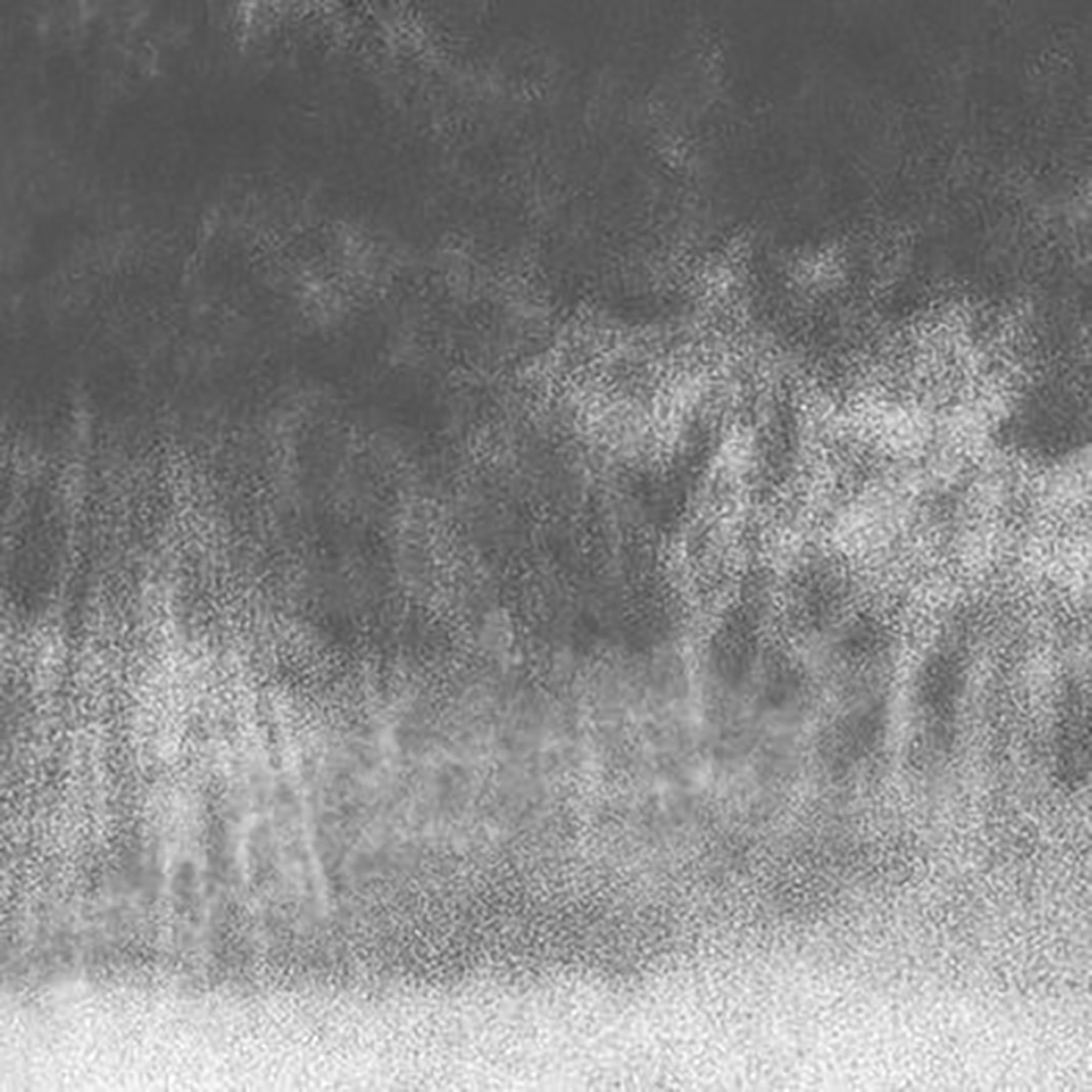 This latest release from Aleksandra Zakharenko is a "selection of soundscapes created by throughout various stages of last year" described as "subliminal moments, suspended fragments, caught between time zones." While that description could admittedly fit quite a lot of Perila's music, 7​.​37​/​2​.​11 has a far more intimate and informal feel than this year's previous release on Smalltown Supersound (How Much Time It Is Between You And Me?). That uncluttered, sketch-like approach suits Zakharenko quite well, as it brings out a bit more distinctive character than her more layered and produced work. Given that Perila is one of the more consistently intriguing artists in the ambient-adjacent abstract electronic milieu, there is plenty to like (or love) about that more produced side too, but I found this more stark and simple side easier to connect with on a deeper level, as these six songs distill Zakharenko's vision to its most pure form without sacrificing any of the beauty.
This latest release from Aleksandra Zakharenko is a "selection of soundscapes created by throughout various stages of last year" described as "subliminal moments, suspended fragments, caught between time zones." While that description could admittedly fit quite a lot of Perila's music, 7​.​37​/​2​.​11 has a far more intimate and informal feel than this year's previous release on Smalltown Supersound (How Much Time It Is Between You And Me?). That uncluttered, sketch-like approach suits Zakharenko quite well, as it brings out a bit more distinctive character than her more layered and produced work. Given that Perila is one of the more consistently intriguing artists in the ambient-adjacent abstract electronic milieu, there is plenty to like (or love) about that more produced side too, but I found this more stark and simple side easier to connect with on a deeper level, as these six songs distill Zakharenko's vision to its most pure form without sacrificing any of the beauty.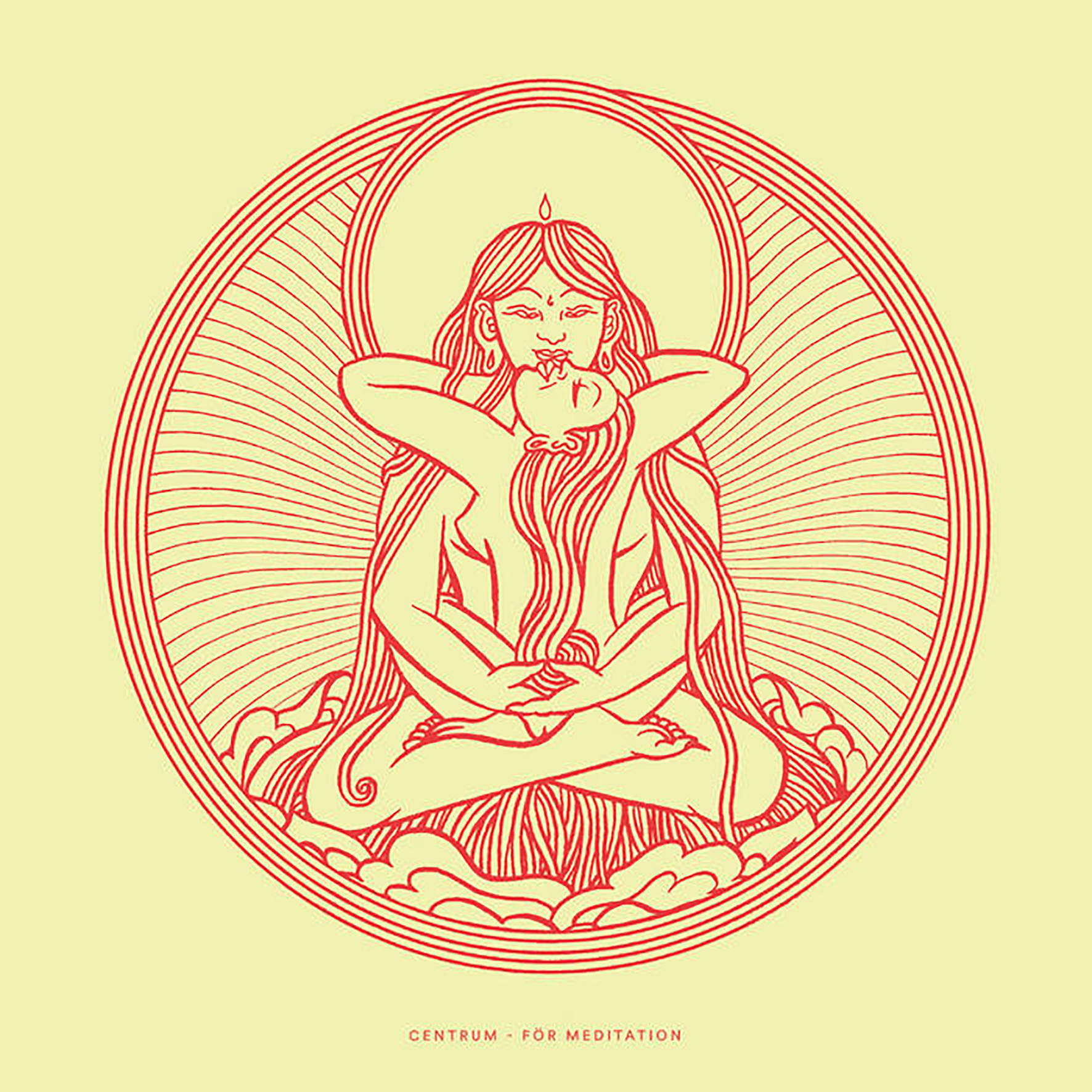 I probably do not follow the contemporary psych-rock scene as closely as I should, so this 2019 side project from Sweden's Hills managed to elude me for a couple of years. On one level, the leap from Hills to Centrum is not exactly a dramatic one, as För Meditation arguably resembles a Hills album with the electronic guitars and jammier tendencies excised. On a deeper level, however, the spell that Centrum casts is very different from that of most modern psych bands, as För Meditation feels like a lost classic from the late '60s/early '70s nexus where hallucinogens, Pandit Pran Nath, and eastern religion collectively transformed the more adventurous fringes of rock forever. In more practical terms, that means that För Meditation is full of droning, chanting, and raga-damaged psychedelia great enough to earn Centrum a place in my personal pantheon of Swedish psych/free music titans like Parson Sound and Träd, Gras och Stenar. They clearly also learned a trick or two from more recent bands too though, as they do an impressive job of sidestepping the genre's more indulgent tendencies and beautifully channel the killer ride cymbal grooves of classic Om (albeit opting more for hypnotic repetition than muscular intensity and virtuosic flourishes).
I probably do not follow the contemporary psych-rock scene as closely as I should, so this 2019 side project from Sweden's Hills managed to elude me for a couple of years. On one level, the leap from Hills to Centrum is not exactly a dramatic one, as För Meditation arguably resembles a Hills album with the electronic guitars and jammier tendencies excised. On a deeper level, however, the spell that Centrum casts is very different from that of most modern psych bands, as För Meditation feels like a lost classic from the late '60s/early '70s nexus where hallucinogens, Pandit Pran Nath, and eastern religion collectively transformed the more adventurous fringes of rock forever. In more practical terms, that means that För Meditation is full of droning, chanting, and raga-damaged psychedelia great enough to earn Centrum a place in my personal pantheon of Swedish psych/free music titans like Parson Sound and Träd, Gras och Stenar. They clearly also learned a trick or two from more recent bands too though, as they do an impressive job of sidestepping the genre's more indulgent tendencies and beautifully channel the killer ride cymbal grooves of classic Om (albeit opting more for hypnotic repetition than muscular intensity and virtuosic flourishes).
